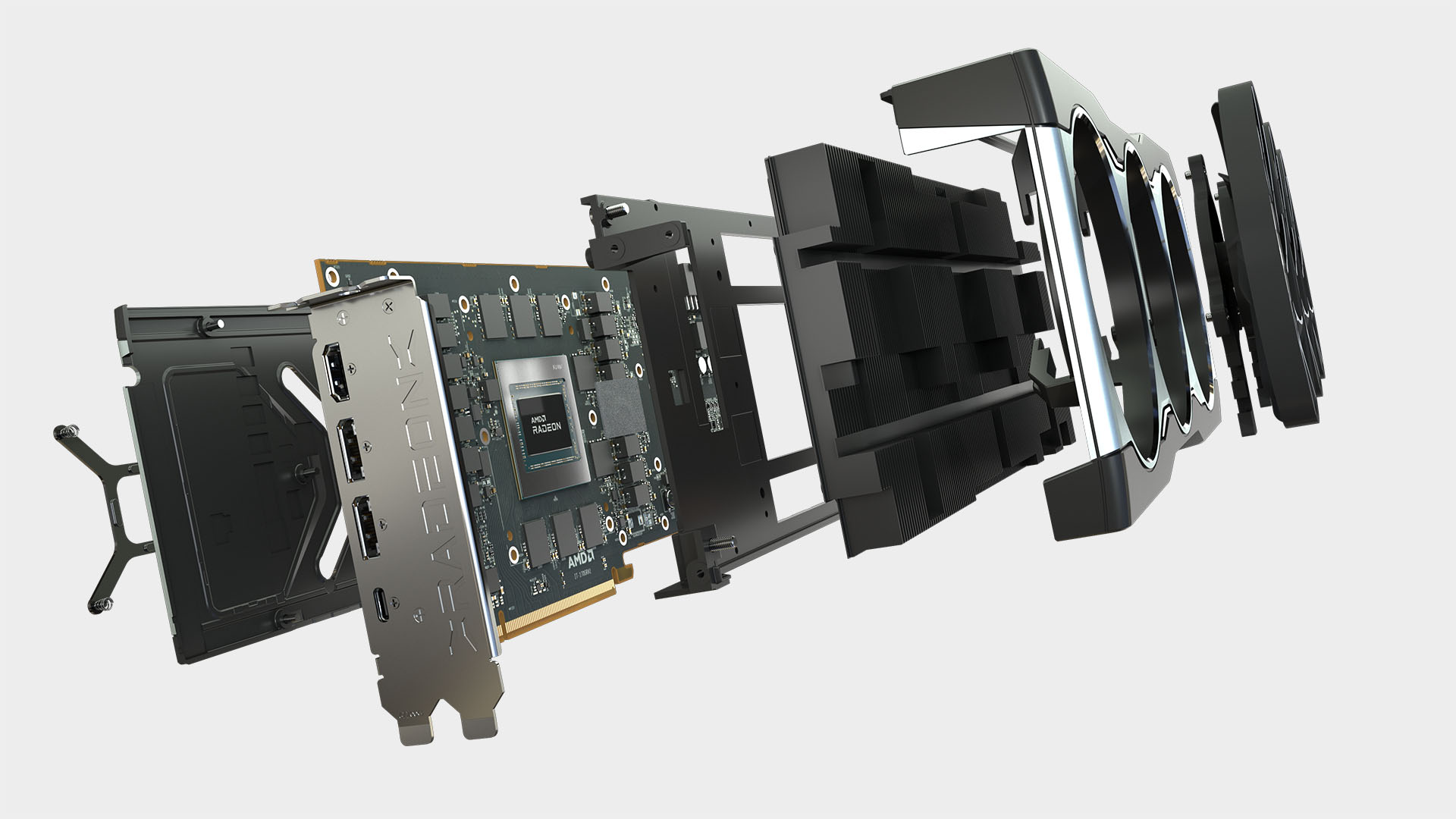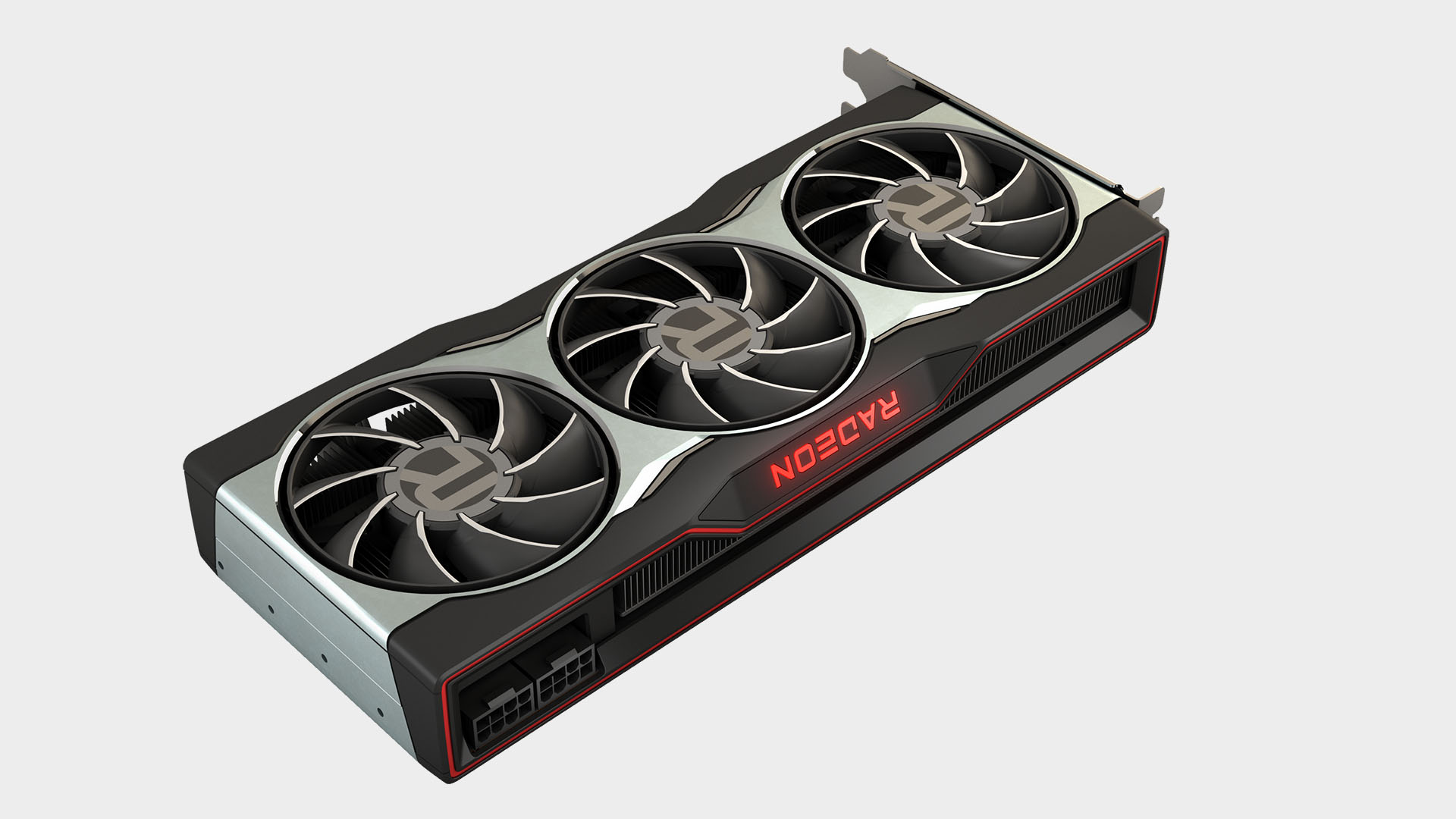AMD RX 6700-series GPUs are coming to make RDNA 2 more affordable
There's a new Navi 22 chip, rumoured to launch by January, 2021.

Can’t afford AMD’s mighty new RNDA 2 boards, otherwise known as the Radeon RX 6800 and RX 6800 XT? Don’t panic. If you can afford one but can’t find any to buy, keep on panicking while we tell everyone else the good news. AMD is prepping new mid-range Radeon RX 6700 and 6700 XT boards based on that same RDNA 2 goodness.
AMD has said RDNA 2 will be a top-to-bottom architecture covering all parts of the market, so the arrival of the 6700-series will be no surprise. But through various leaks and social media posts, we can build a fairly clear picture of the GPU, codenamed Navi 22, that will power these new boards.
Data embedded in a MacOS firmware update, and dug out by Videocardz, confirms the full Navi 22 die packs 40 of AMD’s Compute Units and thus 2,560 stream processors, though we expect only the 6700 XT will have all 2,560 processors enabled. The plain 6700 is likely cut down to some degree. In that regard, the full Navi 22 chip is a dead ringer for the old Navi 10 chip in the Radeon RX 5700 and 5700 XT, which was also a 40 CU GPU.
Of course, those boards were based on the original RDNA architecture, not the hot new ray-tracing enabled shizzle that is RDNA 2. However, in terms of production node, there’s no huge advance for Navi 22. After all, Navi 10 was built on TSMC’s 7nm node, a variation of which is still used for RDNA 2 GPUs.

Black Friday 2020 deals: the place to go for the all the best Black Friday bargains.
Indeed, thanks to that 7nm tech the RX 5700 XT was a pretty speedy GPU with 1,905MHz boost clocks. That isn’t a million miles away from the 2,250MHz of the fastest GPUs based on so-called Big Navi, AKA Navi 21, as found in the 6800 XT and 6900 XT boards.
Still, RDNA 2 does more graphics rendering per clock cycle than RDNA. And you can expect at least some frequency boost with the new Navi 22 GPU versus Navi 10. So, the overall performance uplift should be significant comparing the 5700 series with the 6700 series.
Despite that, early indications suggest the new GPU may actually use less power. Software engineer and repeat Radeon leaker Patrick Schur recently posted TGP specifications for both the 6700 and the 6700 XT. Schur pegged the 6700 at 146 to 156 watts, with the 6700 XT rated at 186 to 211 Watts. The official board power for the Radeon 5700 XT, for comparison, is 225 Watts. We’ll have to wait and see exactly how efficient Navi 22 will prove.
Keep up to date with the most important stories and the best deals, as picked by the PC Gamer team.

Anyway, both boards are said to sport the same 192-bit memory bus. On paper, that’s a step backwards from the 5700’s 256-bit bus. However, Navi 22 will almost certainly have faster memory than Navi 10’s 14Gbps GDDR6. We’re also expecting Navi 22 to have some of AMD’s fancy new Infinity Cache. Big Navi has 128MB of the stuff integrated right into the GPU. It’s said to reduce the need to grab data from the VRAM, making for a less bandwidth-sensitive GPU. The same logic should apply to Navi 22.
Another similarity the 6700-series is expected to share with the 6800 is relatively generous graphics memory allocation, with fully 12GB as standard. Currently, Nvidia’s GeForce RTX 3070, a board that operates in the market segment slightly above what we anticipate for the 5700 and 5700 XT, makes do with just 8GB, while the even more expensive RTX 3080 is a 10GB board.
As for pricing and launch dates, rumour has it Navi 22 boards could be here as soon as January. Price wise, it will come in under the official £529/$579 sticker of the RX 6800. The old 5700 and 5700 XT launched at $349 and $399, so here’s hoping for something similar with the 6700 and 6700 XT. Likewise, fingers crossed availability is decent when these new mid-range boards land. We suspect they will be popular.

Jeremy has been writing about technology and PCs since the 90nm Netburst era (Google it!) and enjoys nothing more than a serious dissertation on the finer points of monitor input lag and overshoot followed by a forensic examination of advanced lithography. Or maybe he just likes machines that go “ping!” He also has a thing for tennis and cars.

